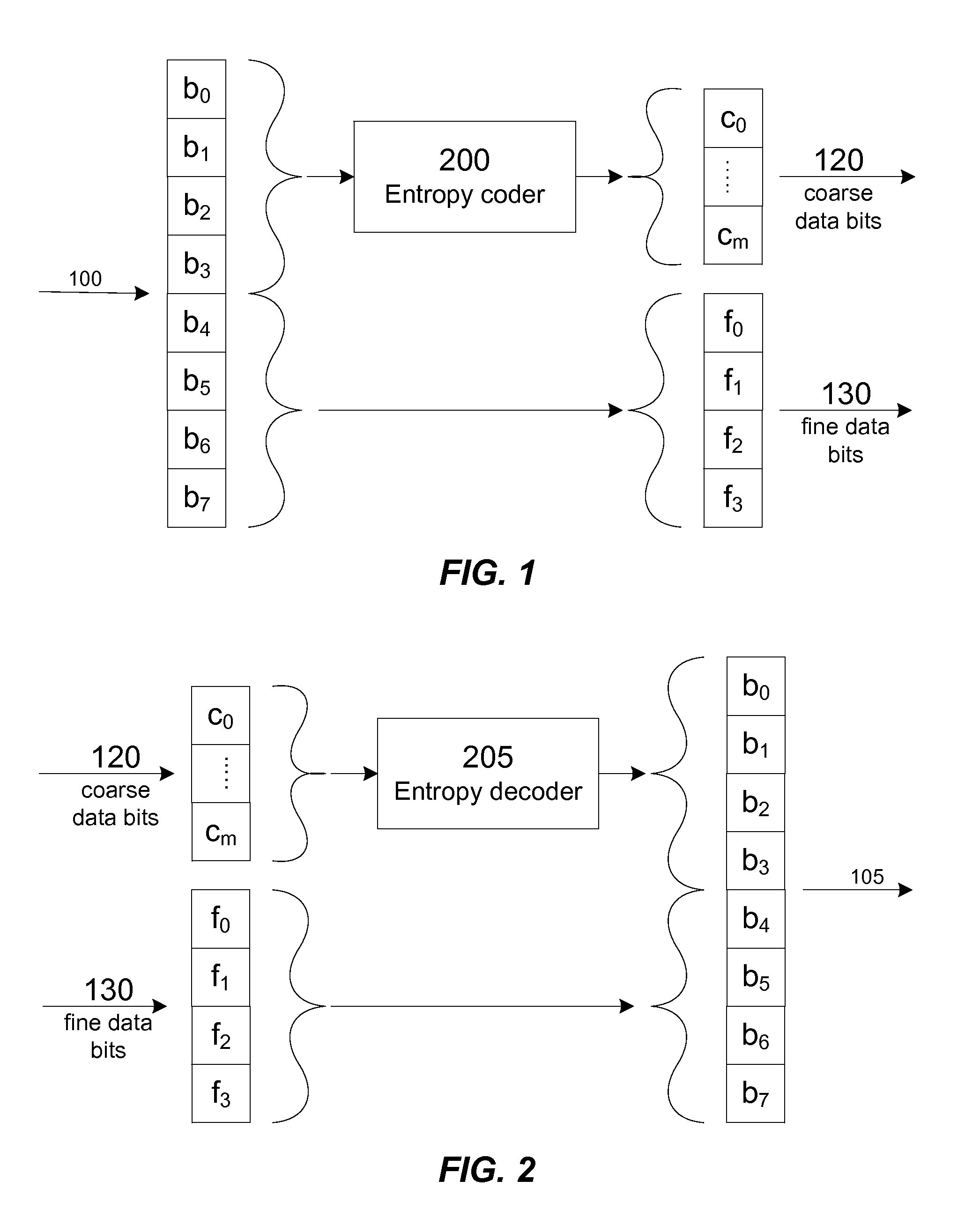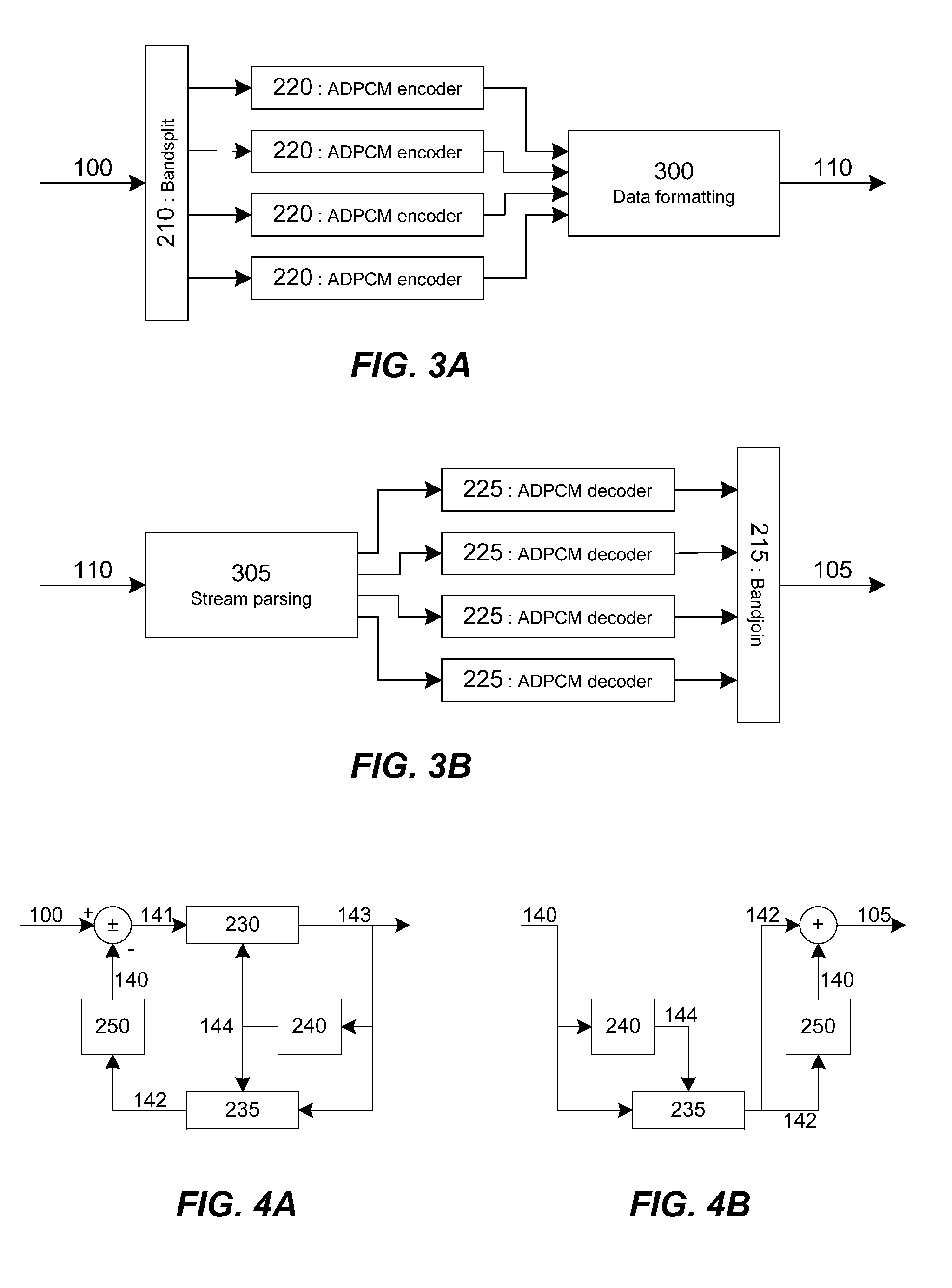Lossy coding of signals
a lossy coding and signal technology, applied in speech analysis, image data processing, redundant data error correction, etc., can solve the problems of increasing the probability of bit error sensitivity, considerable inconvenience of transmission over a fixed rate channel, and entropy coding incurs some practical disadvantages, so as to minimise nonlinear distortion and minimise errors
- Summary
- Abstract
- Description
- Claims
- Application Information
AI Technical Summary
Benefits of technology
Problems solved by technology
Method used
Image
Examples
Embodiment Construction
[0159]As noted above, entropy coding is commonly used to provide a digital representation of a signal that uses fewer bits for commonly occurring signal values or patterns, and more bits to represent less usual patterns. In video coding, advantage is taken of correlation of adjacent pixels, for example by transforming to a frequency representation using a Discrete Cosine Transform, so that fewer bits are required for areas of smooth colour than for edges or for heavily textured areas. In audio coding, a steady tonal signal can be coded to few bits either by transforming to a frequency representation or by using prediction, more bits being required to describe a transient or a noiselike signal.
[0160]If values representing the signal (for example sample values, prediction residuals, or frequency domain coefficients) are coded using Linear Pulse Code Modulation (LPCM), then, if it is not possible to store or transmit the resulting codewords in their entirety, it is traditional to trunc...
PUM
 Login to View More
Login to View More Abstract
Description
Claims
Application Information
 Login to View More
Login to View More - R&D
- Intellectual Property
- Life Sciences
- Materials
- Tech Scout
- Unparalleled Data Quality
- Higher Quality Content
- 60% Fewer Hallucinations
Browse by: Latest US Patents, China's latest patents, Technical Efficacy Thesaurus, Application Domain, Technology Topic, Popular Technical Reports.
© 2025 PatSnap. All rights reserved.Legal|Privacy policy|Modern Slavery Act Transparency Statement|Sitemap|About US| Contact US: help@patsnap.com



